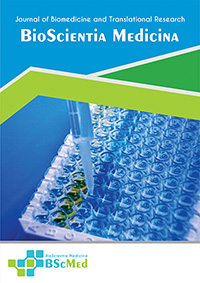Main Article Content
Abstract
Background: Ultraviolet B (UVB) radiation is a primary driver of cutaneous hyperpigmentation disorders, with oxidative stress recognized as a key pathogenic mechanism. However, a comprehensive, multi-level characterization of the causal link between chronic UVB exposure and the resulting oxidative, histological, and melanogenic responses is needed. This study aimed to quantitatively validate a preclinical model of UVB-induced hyperpigmentation by characterizing the reciprocal regulation of key oxidative stress biomarkers and correlating these changes with objective histological evidence of hyperpigmentation.
Methods: This controlled in vivo experimental study used 14 male Sprague Dawley rats, divided into a control group (KN; n=7) and a UVB-exposed group (KP; n=7). The KP group received chronic UVB radiation (300 mJ/cm² daily, 5 days/week for 4 weeks). Dorsal skin tissue was harvested for analysis. Oxidative stress was assessed by quantifying malondialdehyde (MDA), superoxide dismutase (SOD), catalase (CAT), and glutathione peroxidase (GPx) levels via ELISA. Hyperpigmentation was objectively validated and quantified using Fontana-Masson staining for melanin deposition and immunohistochemistry for microphthalmia-associated transcription factor (MITF).
Results: Chronic UVB exposure induced significant hyperpigmentation, confirmed by a 5.8-fold increase in epidermal melanin content (p < 0.001) and a 4.1-fold increase in the number of MITF-positive melanocytes (p < 0.001) in the KP group. This was accompanied by a profound oxidative imbalance: MDA levels increased by 7.5-fold (p < 0.001), while the activities of SOD, CAT, and GPx decreased by 80.5%, 65.2%, and 71.4%, respectively (all p < 0.001). A strong negative correlation was observed between MDA and all antioxidant enzymes, particularly SOD (r = -0.985, p < 0.001).
Conclusion: Chronic UVB exposure directly triggers a collapse of the cutaneous antioxidant network, leading to severe lipid peroxidation. This state of profound oxidative stress is causally linked to melanocyte activation and excessive melanin synthesis, driving the hyperpigmentation phenotype. This robustly validated preclinical model provides a powerful platform for investigating the molecular pathophysiology of UVB-induced pigmentary disorders and for evaluating novel therapeutic interventions.
Keywords
Article Details
As our aim is to disseminate original research article, hence the publishing right is a necessary one. The publishing right is needed in order to reach the agreement between the author and publisher. As the journal is fully open access, the authors will sign an exclusive license agreement.
The authors have the right to:
- Share their article in the same ways permitted to third parties under the relevant user license.
- Retain copyright, patent, trademark and other intellectual property rights including research data.
- Proper attribution and credit for the published work.
For the open access article, the publisher is granted to the following right.
- The non-exclusive right to publish the article and grant right to others.
- For the published article, the publisher applied for the Creative Commons Attribution-NonCommercial-ShareAlike 4.0 International License.





